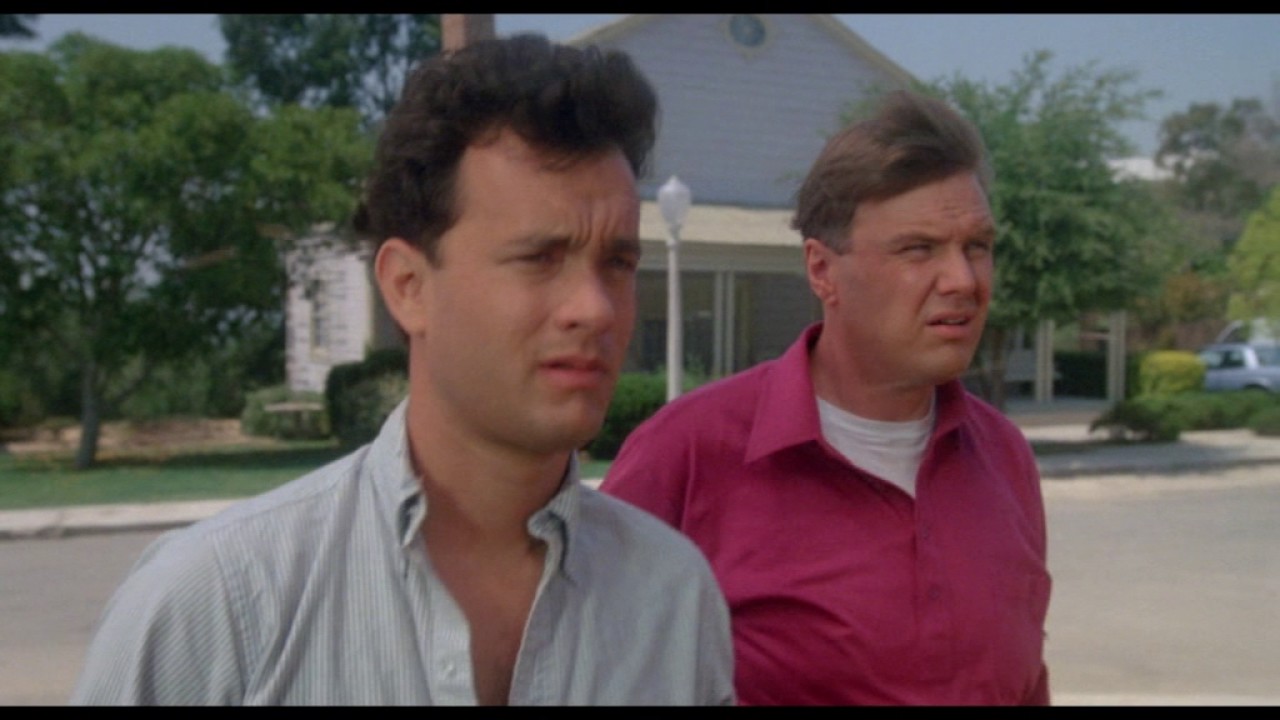There are things that we like that are inexplicable, right? Or maybe there is a reason for our undying adoration, but objectively it makes no sense. Right? That no matter how much we might try to defend it from an objective stance, we know deep down that it is quite bad.
Take blue cheese for instance. I love it, but I can objectively see why most people don’t find moldy old cheese to be all that appealing. And frankly, I think we all know that people who say they GENUINELY enjoy beer and wine beyond its intoxicating effects are, well, liars. Especially people who claim to genuinely enjoy IPA’s. (Liars!)
So, when I tell you that I have an undying affection for the films of Joe Dante and you inevitably ask me, “Who?” and then I explain and you SCREAM “WHY!?” I will know that deep down, you’re probably right, objectively.
Don’t get me wrong, Joe Dante has had some great films in his filmography. I mean, we’re talking about the director of “The Howling,” one of the only movies that can go toe-to-toe with “An American Werewolf in London” as the best werewolf movie of all-time.
But he also made “Gremlins.” Which is, objectively speaking, one of the better popcorn films of the ‘80s, and maintains to this day a feverishly loyal following of fans heaping adoration its way.
This is when I tell you, bursting with joy and excitement, that he ALSO made the sequel to that film. Which, most likely, you haven’t seen, or have burned from your memory. To which I might say, “Why, it’s a masterpiece?” (I’m a liar. It’s not.)
I mean, this is after all the movie that spawned one of the wildest and most ridiculous Key & Peele sketches, in which a script doctor named Star Magic Jackson Jr., shows up and tells the writers to create their own gremlin. It doesn’t go that well.
So, yeah. Dante’s had a weird, weird career. But I love almost all of it. And that’s why I want to talk about one of his nearly forgotten films: “The ‘Burbs”
Before Tom Hanks was winning Oscars (back-to-back, no less) and winning the hearts of the world (have you seen him as Mr. Rogers? I’m already crying!) he was Ray Peterson of Mayfield Place, neighbor to a gaggle of recluse neighbors who conducted loud, multi-colored experiments in their basement after dark.
“The ‘Burbs” was released one year after “Big,” arguably Tom Hanks’ star-making role, and only a few years after “Splash.” But other than that, he’d been a relative unknown until this point in his career. And I’ll save you the suspense…this movie didn’t shoot his career into the stratosphere.
But he is one member of an arguably amazing cast of actors, including the likes of Bruce Dern (arguably one of the best unknown actors outside of Harry Dean Stanton), post-Star Wars Carrie Fisher, teenaged Corey Feldman, Henry Gibson (who is amazing in Altman’s “Nashville,” “The Blues Brothers” and one of my favorite movies ever, P.T. Anderson’s “Magnolia”) and Rick Ducommun, who spent most of the late ‘80s and early ‘90s playing bit parts in a bevy of movies I feel a great deal of nostalgia for.
The set used for the film was that of “Colonial Street” a famed suburbia set that once played host to “The Munsters” back in ‘64 and would eventually play host to the residents of Wisteria Lane, the fictional street in “Desperate Housewives.” (I’ve never actually seen the show.)
And it was that sort of timeless suburban charm that the movie played upon, both thematically and aesthetically. Released in ‘89, the movie existed in the wake of the occult horror of the 1970s and at the tail end of the slasher genre that either birthed in ‘60 with the release of Psycho, ‘74 with the release of “Black Christmas” but really took off once a Captain Kirk wearing, knife wielding, jumpsuit wearing psychopath named Mike Myers started attempting to kill Jamie Lee Curtis in ‘78.
So, in other words, the film was very much a reaction to the slow decay of the idyllic Americana of the late ‘50s, which in itself was pretty much not true. But in the wake of World War II, and with a renewed zeal for American nationalism throughout the early days of the Cold War, the sheen had not yet worn off America’s coat.
That is, until the JFK and MLK assassinations, Vietnam, the Manson murders and the occult-fueled fear and and drug induced paranoia of the ‘70s set in full force.
“The ‘Burbs” was a takedown of the suburban, idealized, norm of Americana of middle-America (which was actually considerably more sinister than you might imagine). It featured a cast that included a former ‘Nam vet (Dern), a wildly intolerable conspiracy theorist (Ducommun), a beach-blond stoner teen (Feldman), and a normal guy just “trying to get some rest.”
All of whom hold their new neighbors, who are admittedly bizarre; with yellowed grass, a slowly decaying, paint chipped home and who spend most nights in their basement conducting the aforementioned experiments; in great suspicion.
I won’t say that it is by any means a great deconstruction of the sheen worn off the suburbia glow, or that it is a good satire for the way in which America has slowly delved into the paranoid mess that it is today, but it is SO MUCH FUN.
Part of that joy might come from the fact that I was enamored with it as a child, then forgot about it, then suddenly stumbled upon it in my early adult years, only to fall even harder in love with the wave of nostalgia is brings to me. But of the few people whom I know who have watched it, most would agree with my feelings regarding it.
A lot of that comes from Dante’s almost Chuck Jones-esque love for the zany and absurd. For anybody who has seen “Gremlins 2” and hasn’t held it to the same degree of mastery as the original, it is an insanely funny, and enjoyable film. It bursts at the seams with a cartoonish charm. I mean, how can you not love a sequel that breaks the fourth wall with a Hulk Hogan cameo? It’s brilliant, in its own way.
“The ‘Burbs” is much the same, what with the cartoonishly ghoulish Klopeks house, or the thoroughly enjoyable, should be infamous, zoom-in-zoom-out, as Hanks and Ducommun find a femur in Hanks’s backyard they believe to be a neighbor’s.
It goes without saying that art is subjective. Somebody could say that Picasso’s “Guernica” or “The Old Guitarist” are unrivaled in their beauty, and maybe, despite the hyperbole of such a sentence, they might be right.
Other people might consider the films of David Lynch as insufferable, dadaist garbage, more like dreams than movies (I think Lynch would like that comparison, honestly). Others might say that there is no value in the works of John Carpenter, or Ed Wood, or John Waters, but their contribution to not only their art, but to society, has been cemented into the collective unconsciousness.
You could take the high art statement of Arthur Miller’s farce of McCarthyism via “The Crucible” or Paul Veerhoven’s wonky take on the militarization of the police force in “Robocop” and face them off against each other. See which one comes out as more profound. But in the end, it doesn’t really matter, does it?
Does a piece of art have to be objectively great to have an impact on culture? No, obviously. Tons of people still watch “The Big Bang Theory,” for some reason (I’m just kidding, it’s okay if you like that show that I VERY MUCH hate), despite it taking a great deal of criticism throughout its run.
Arguably the point of art is that it connects with us, that something it’s trying to say strikes a chord in us and that, like an amplified guitar, we resonate on the same frequency. So, with that, I say, go watch “The ‘Burbs.” You’re bound to like it and all of its zany, ghoulish fun.
So then, next week, I’ll try to direct us more back into the arena or horror and talk about both a horror icon (kinda) and the movie that chronicles parts of his life.
Richard Foltz
Managing Editor

